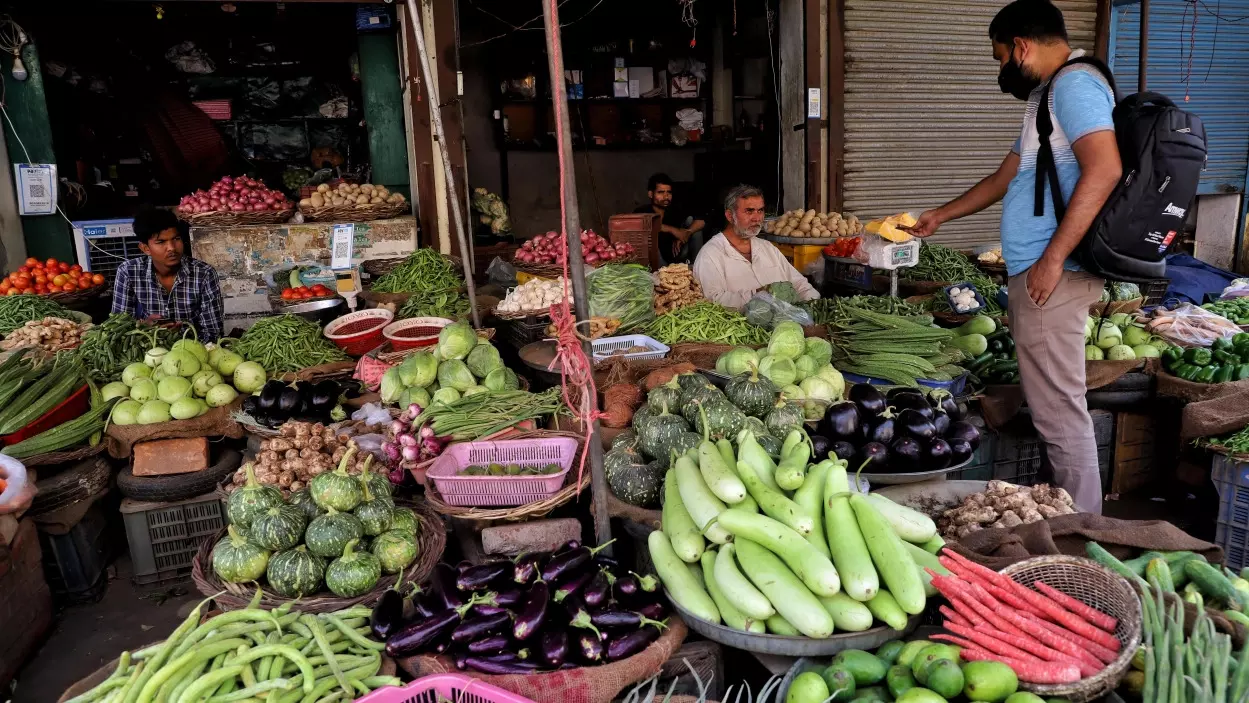Retail inflation eases to 5-month low of 4.85% in March, inches close to RBI's target
The inflation in the food basket was at 8.52% in March, down from 8.66% in February. Inflation in eggs, spices, and pulses, among others, eased on a month-on-month basis. However, there was an uptick in fruits and vegetables segments in March compared to February. The retail inflation was also lower in the 'fuel and light' segment
image for illustrative purpose

New Delhi: Retail inflation declined to a five-month low of 4.85 per cent in March mainly due to cooling food prices, inching towards the Reserve Bank's target of 4 per cent, according to official data released on Friday. The Consumer Price Index (CPI) based retail inflation was 5.09 per cent in February and 5.66 per cent in March 2023. Previously, CPI-based inflation was the lowest at 4.87 per cent in October 2023. The inflation in the food basket was at 8.52 per cent in March, down from 8.66 per cent in February, according to the data released by the National Statistical Office (NSO).
According to the data, inflation in eggs, spices, and pulses, among others, eased on a month-on-month basis. However, there was an uptick in fruits and vegetables segments in March compared to February. The retail inflation was also lower in the 'fuel and light' segment. The government has tasked the Reserve Bank to ensure inflation remains at 4 per cent, with a margin of 2 per cent on either side. According to the Reserve Bank, which factors in consumer inflation while arriving at its bi-monthly monetary policy, food price uncertainties continue to weigh on the inflation trajectory going forward. The central bank has projected retail inflation at 4.5 per cent for the current fiscal assuming a normal monsoon. Continuing geopolitical tensions also pose an upside risk to commodity prices and supply chains. The RBI projected inflation at 4.9 per cent for the April-June quarter and at 3.8 per cent for the September quarter. Commenting on the CPI data, Aditi Nayar, Chief Economist, ICRA said an intensification of the impending heatwave may worsen the seasonal uptick in prices of perishables, heightening the criticality of a favourable monsoon in 2024 to keep food inflation in check and inflationary expectations well-anchored. The ongoing uptrend in international crude oil prices could also pose a risk to the CPI inflation outlook in the near term, although the extent of the impact would depend on the pass-through to retail fuel prices. "At best, we foresee 50 bps of rate cuts from the Monetary Policy Committee, in the second half of fiscal 2024-25," she added. According to the NSO data, the inflation in rural India was higher than the national average at 5.45 per cent while in urban areas, it was lower at 4.14 per cent in March. The highest inflation was recorded in Odisha (7.05 per cent) and the lowest in Delhi (2.29 per cent). The NSO collects the price data from selected 1,114 urban markets and 1,181 villages covering all states/UTs on a weekly basis. During March 2024, NSO collected prices from 99.8 per cent villages and 98.5 per cent urban markets.

